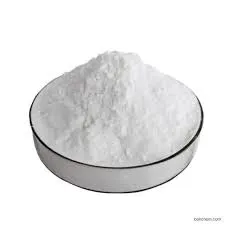- Afrikaans
- Albanian
- Amharic
- Arabic
- Armenian
- Azerbaijani
- Basque
- Belarusian
- Bengali
- Bosnian
- Bulgarian
- Catalan
- Cebuano
- Corsican
- Croatian
- Czech
- Danish
- Dutch
- English
- Esperanto
- Estonian
- Finnish
- French
- Frisian
- Galician
- Georgian
- German
- Greek
- Gujarati
- Haitian Creole
- hausa
- hawaiian
- Hebrew
- Hindi
- Miao
- Hungarian
- Icelandic
- igbo
- Indonesian
- irish
- Italian
- Japanese
- Javanese
- Kannada
- kazakh
- Khmer
- Rwandese
- Korean
- Kurdish
- Kyrgyz
- Lao
- Latin
- Latvian
- Lithuanian
- Luxembourgish
- Macedonian
- Malgashi
- Malay
- Malayalam
- Maltese
- Maori
- Marathi
- Mongolian
- Myanmar
- Nepali
- Norwegian
- Norwegian
- Occitan
- Pashto
- Persian
- Polish
- Portuguese
- Punjabi
- Romanian
- Russian
- Samoan
- Scottish Gaelic
- Serbian
- Sesotho
- Shona
- Sindhi
- Sinhala
- Slovak
- Slovenian
- Somali
- Spanish
- Sundanese
- Swahili
- Swedish
- Tagalog
- Tajik
- Tamil
- Tatar
- Telugu
- Thai
- Turkish
- Turkmen
- Ukrainian
- Urdu
- Uighur
- Uzbek
- Vietnamese
- Welsh
- Bantu
- Yiddish
- Yoruba
- Zulu
Dec . 04, 2024 09:07 Back to list
veterinary antifungal drugs
Veterinary Antifungal Drugs An Overview
Fungal infections in animals can pose significant health risks, leading to various diseases ranging from superficial skin infections to life-threatening systemic mycoses. The utilization of antifungal drugs in veterinary medicine has become crucial in managing these infections, providing a means to improve animal health and welfare.
Understanding Fungal Infections in Animals
Fungal infections in animals can be caused by a variety of fungi, including dermatophytes, yeasts, and molds. Common fungal diseases include ringworm (dermatophytosis), aspergillosis, and candidiasis. These infections can affect various species, including domestic pets like cats and dogs, livestock such as cattle and pigs, and even wildlife.
The symptoms of fungal infections can vary greatly. For instance, dermatophytes may cause hair loss, itching, and skin lesions, while systemic infections can lead to respiratory distress, organ dysfunction, and even death. The diagnosis of these infections often involves clinical examination, laboratory tests, and sometimes imaging techniques.
Classifications of Antifungal Drugs
Antifungal drugs can be broadly classified into several categories based on their mechanism of action. The most commonly used antifungal agents in veterinary medicine include
1. Azoles These drugs inhibit the synthesis of ergosterol, a critical component of fungal cell membranes, thereby disrupting their integrity. Common azoles include ketoconazole, itraconazole, and fluconazole. They are effective against a wide range of fungi and are often used for both dermatological and systemic infections.
2. Polyenes Amphotericin B is a well-known polyene that binds to ergosterol and forms pores in the fungal membrane, leading to cell death. While very effective, its use is often limited due to potential nephrotoxicity, requiring careful monitoring of kidney function in treated animals.
veterinary antifungal drugs

3. Echinocandins This newer class of antifungals, including caspofungin and micafungin, inhibits the synthesis of glucan in the fungal cell wall, which is essential for maintaining cell wall integrity. Echinocandins are primarily used for treating invasive fungal infections in immunocompromised patients.
4. Allylamines Terbinafine is an allylamine commonly used for dermatophyte infections. It works by inhibiting an enzyme responsible for ergosterol synthesis, and it has gained popularity for treating cases of ringworm in both veterinary and human medicine.
Administration and Dosage
The method of administration of antifungal drugs can vary based on the specific drug, the type of infection, and the animal being treated. Common routes include oral, topical, and intravenous administration. The dosage and duration of treatment depend on the severity of the infection, the specific antifungal agent used, and the animal's health status. Veterinary professionals must carefully determine the appropriate treatment plans to ensure the effectiveness of the drug while minimizing side effects.
Side Effects and Considerations
Although antifungal drugs are essential tools in veterinary medicine, they are not without side effects. Potential complications can range from mild gastrointestinal disturbances to severe liver or kidney toxicity, especially with prolonged use. Because of these risks, veterinary practitioners must conduct thorough assessments before administering antifungal therapy and monitor animals closely throughout the treatment process.
Conclusion
The development and use of antifungal drugs in veterinary medicine are critical for the effective management of fungal infections in animals. With a variety of agents available, veterinarians can tailor treatments to specific infections, enhancing animal welfare and health outcomes. Continuous advancements in research and drug development will likely yield more effective and safer antifungal therapies in the future, ultimately benefiting both animal and human health. As our understanding of fungal pathogens evolves, so too will our strategies in combating these insidious threats to animal health.
-
Guide to Oxytetracycline Injection
NewsMar.27,2025
-
Guide to Colistin Sulphate
NewsMar.27,2025
-
Gentamicin Sulfate: Uses, Price, And Key Information
NewsMar.27,2025
-
Enrofloxacin Injection: Uses, Price, And Supplier Information
NewsMar.27,2025
-
Dexamethasone Sodium Phosphate Injection: Uses, Price, And Key Information
NewsMar.27,2025
-
Albendazole Tablet: Uses, Dosage, Cost, And Key Information
NewsMar.27,2025













